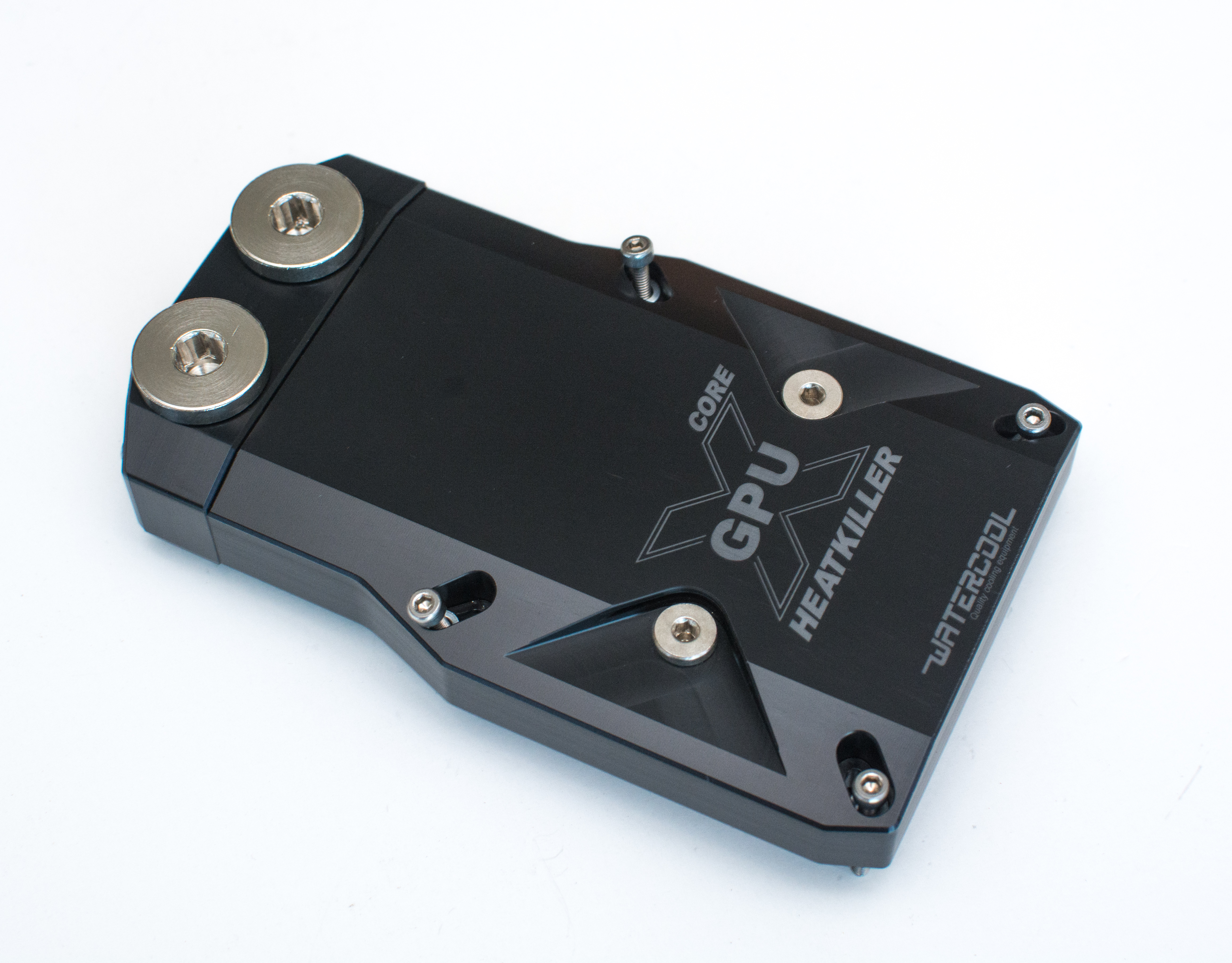Test Setup
We used a similar bench setup as in our full cover roundup:
i7-4930K + Rampage IV Gene + 4x4GB Corsair Dominator GT 2133CL9 1.5V
Corsair AX1200, Spotwood Tech Bench
MCP35x2, EX560, 8x YateLoon 140mm low speed fans on radiator, EK XRes3 400mm
Aquaero 6, King Instruments Flow Meter, CrystalFontz CF-635
Each block was mounted once. This introduces more error than using multiple mounts, but GPUs are more sensitive to mounting pressures than CPUs. For reference this was the fourth R9-290 we had to test on during the course of this review. To reduce error the blocks go through a 3 hour burn in to combat any TIM curing. Then 7 data points are taken at various flows. 10 minutes of settling is allowed after the burn in and between each data points. Each data point is logged over 20 minutes and the average of core, VRMs and coolant is recorded. This reduces the error as you will see in the thermal plots. Each plot contains data only from the same GPU card sample. The previous full cover roundup used a different GPU sample, so while the heatloads are very close, the numbers can not be directly compared.
We then plot the delta between the average component temperature and the average coolant temperature. Using an average reduces error. Using coolant temperature is more accurate than air temperatures because it isolates the performance of the block from any system level performance e.g. radiator performance, but it is also less prone to error as air temperature sensors can be quite sensitive to localized air flow. As testing is done in a garage, air flow currents can be somewhat unpredictable. Having said all of this – deltas to air do not normally show any real different in relative performance vs deltas to coolant. For the seven flow rates a fixed pump power is used for each and a curve of best fit is added to the plot. Reading the plots at a particular flow rate value e.g. 1GPM will give you a good indication of the flow of that block at that flow rate. However bear in mind that less restrictive blocks will perform better in the same loop due to having a higher average flow rate than a high restriction block. This is why we label better performing blocks as having better temperatures *and* higher flow rates.











Is there any reason why the Micro SW-X can not be used in combination with any other universal cooler? My choice would be the EK Supremacy VGA (mostly because it’s so tiny and should allow the use of VGA cooling pads compared to some other bigger models) with the Micro SW-X in series.
Also, how where did you get that T-shaped VRAM – VRM heatsink? http://abload.de/img/mxlcv7010sd7.jpg Why is it T-shaped? Are the surface mount components beside the VRM higher than the VRM itself? Same problem like with the GPU – VRM? I am a bit worried about the VRAM – VRM temperature which has no temperature sensor.
[…] 2014 Universal GPU Block Roundup […]
Comments are closed.